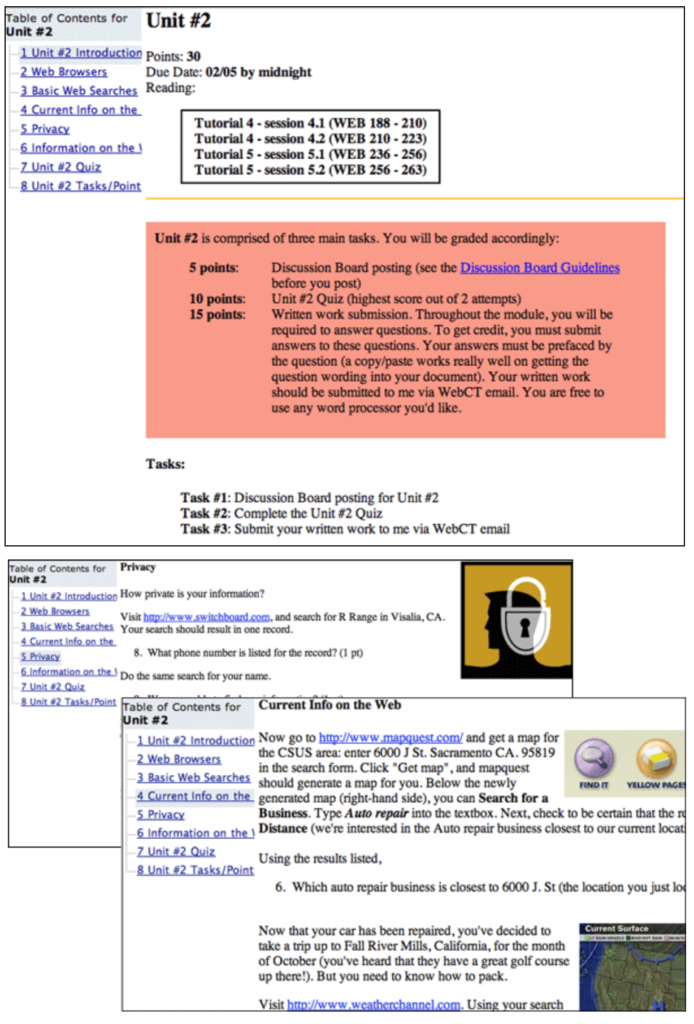No, this is not the answer to a Jeopardy question… although it probably was at some point. Do you know that Jeopardy aired for more than 37 seasons? Alex Trebek started hosting it when it revived in 1984 until his death in 2020. Technically I think it aired for 57 seasons. You should read his autobiography… it’s pretty interesting! For example… Alex only worked two days a week — filming an entire week’s worth of episodes in one day (most of the time). And he insisted on being introduced as “the host” rather than “the star” because the show wasn’t about him – it was about the contestants.
Moving along, the clue (or question) that might go along with the answer above would be “The creation of learning experiences and materials resulting in the acquisition and application of knowledge and skills” — this being the first definition that came up when I typed it into Google. Still… if I gave that answer to folks who ask what I do, I’d get a blank look. My standard answer has evolved into something like this… “So you know what graphic designers do, right? (they design a graphic or graphics based on the needs of a customer). Well, I do something similar, but I design instruction rather than graphics. So this “instruction” could be in the form of webpages on a website, a set of documents or a booklet, or even a course delivered on a Learning Management System. Have you ever taken an online course, learned from a book, or had to complete some kind of certification (usually online?). Chances are that there was an instructional designer involved in the creation of that material. It usually looks like this:
- Someone (we call that person a “subject matter expert”) wants to teach a group of people something. Or they grow weary of giving out the same instruction over and over again.
- The “subject matter expert” meets with an instructional designer. Together, they come up with a plan that takes the following into account:
- audience (age, location, education, access to technology, etc.)
- learning goals
- training needs
- stakeholder needs
- required resources
- The instructional designer will then design, develop, and deliver (implement) the training based on the plan. The “subject matter expert” provides all of the knowledge, of course (because I’m not, say, a nurse… do I know how to run a PICC line? NO).
- Evaluate — have the learning goals been achieved? If not, or if there is room for improvement, we would go back and “tweak” the design.
It’s hard to envision what all of this might look like unless you experience it. But I can give you an example. I do actually have many examples, but the hard part about providing those is that the content does not belong to me! So I’m limited. An example I can show you is from a class I taught several years ago. I inherited the course content from another instructor, but there were problems. #1 – the student retention rate (students were dropping the course) and #2 – course goals were not being met (evident when we evaluated the students @ the end). So I redesigned the course using instructional design.
The example below represents ONE of the assignments from the class.
Can you see how it changed?
- Expectations clearly communicated.
- Content broken up into “subtopics”. “Chunking” content up like this makes it easier to learn from, or digest.
- Additional content added to help direct learning (as a supplement to the reading). Graphics also added to aid in visual learning (did you know that most of us learn visually?)
- Discussion component added. Because this was an online class, it was extremely important to provide opportunities for students to connect with others who were also learning the same material. Not only does this help with retention rates, but students can learn from each other.
- Short quiz added. This helps keep students accountable to keeping up and learning the material.
This is only one component of the course. There were several other changes made, in addition to this one assignment. Anyway, I hope that you can get the gist of it from this one example.
Most instructional designers follow a formal “design process”, such as the well-known ADDIE model. And many of us work on a team that includes, perhaps, a videographer, graphic designer, and the like. In my previous job, I was spoiled like that, but not so at this point. I design some of my own graphics (always learning new tricks, plus trying to keep up with the software), and can do some basic video. The fun part about this job is that I’m always learning!!!!!! If not new software or things like that, I learn a little from the subject matter experts that I work for. 🙂


